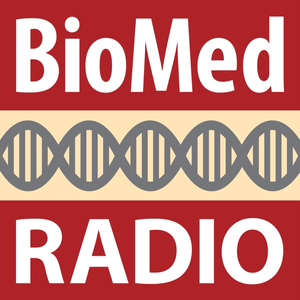
Brain changes in Tourette syndrome
10/25/16 • 2 min
Using MRIs, researchers at Washington University School of Medicine in St. Louis have identified areas in the brains of children with Tourettes syndrome that appear markedly different from the same areas in the brains of children who dont have the neuropsychiatric disorder.
RESEARCHERS AT WASHINGTON UNIVERSITY SCHOOL OF MEDICINE IN ST. LOUIS HAVE IDENTIFIED A FEW AREAS IN THE BRAINS OF CHILDREN WITH TOURETTES SYNDROME THAT APPEAR TO BE DIFFERENT FROM THE SAME AREAS IN THE BRAINS OF KIDS WHO DONT HAVE THE NEUROLOGICAL DISORDER. AND THE REGIONS THAT THEY IDENTIFIED ARE ONES WHERE THEY HADNT REALLY EXPECTED TO SEE DIFFERENCES. JIM DRYDEN HAS THE STORY
THE RESEARCHERS USED MAGNIETIC RESONANCE IMAGING IN THE LARGEST STUDY OF ITS KIND EVER DONE ON PATIENTS WITH TOURETTES SYNDROME. IT INVOLVED RESEARCH TEAMS AT SEVERAL CENTERS AROUND THE UNITED STATES. PRINCIPAL INVESTIGATOR KEVIN BLACK, A PSYCHIATRIST AT WASHINGTON UNIVERSITY SCHOOL OF MEDICINE IN ST. LOUIS, SAYS THE RESEARCHERS ANALYZED MRI BRAIN SCANS CONDUCTED ON 103 KIDS WHO HAD TICS RELATED TO TOURETTES SYNDROME AND ANOTHER 103 KIDS OF THE SAME AGE AND GENDER WHO DIDNT. (act) :23 o/c template brain
The method that we picked is one that looks at the whole brain. Basically, it squishes and stretches a brain until its the same shape as a standard brain, and keeps track of how much its squished, or stretched, in each spot so that you can tell what the volume of the brain was that matches any given part of the template brain.
IN ADDITION TO THE SQUISHING AND STRETCHING OF THE IMAGE, THE METHOD ALSO CAN DIFFERENTIATE BETWEEN GRAY MATTER AND WHITE MATTER IN THE BRAIN.
(act) :09 o/c the MRI
The method also figures how much gray matter or white matter was in each spot based on the color, essentially, of the brain image, of the MRI.
BLACK SAYS WHEN THE STUDY BEGAN, THE RESEARCHERS WERE FOCUSED ON PARTS OF THE BRAIN THAT ARE RELATED TO MOVEMENT BECAUSE TOURETTES IS CHARACTERIZED BY MOVEMENTS CALLED TICS. BUT BLACK SAYS THE STUDY DIDNT FIND DIFFERENCES IN THOSE PARTS OF THE BRAIN. INSTEAD, THEY FOUND EXTRA GRAY MATTER IN SOME PARTS OF THE BRAIN AND REDUCED WHITE MATTER IN OTHER PARTS, AND MANY OF THOSE BRAIN REGIONS WERE RELATED TO THE PROCESSING OF SENSATION. THAT COULD MAKE SOME SENSE, BLACK SAYS, BECAUSE MANY PEOPLE WITH TOURETTES REPORT THAT THEY TEND TO TIC IN RESPONSE TO A SENSATION.
(act) :24 o/c own beast
Like, Well, Im only clearing my throat because it feels funny, that kind of thing. Or I only sniff because my nose feels itchy. Maybe the sensory features are really the most obvious ones. Like, if you have a cold, and somebody says, Well, why dont you stop coughing? Youre like, Well, Im only coughing because Ive got junk in my throat. You know, that kind of sense that, really, its the feelings inside that lead to the tics, rather than the tics being their own beast.
AS TO WHETHER THE DIFFERENCES IN THE BRAINS OF KIDS WITH TOURETTES ARE ACTUALLY CAUSING THEM TO TIC OR ARE THE RESULT OF THOSE CHILDREN TRYING TO ADJUST TO THEIR TICS, BLACK SAYS ITS TOO EARLY TO TELL.
(act) :23 o/c years now
Is this something that starts early in life? Does it start before people have tics, and that leads to their having tics? Or, is it a healthy response to tics that helps fight them off? Those are questions that we can best answer by trying to catch people very early on in the course of tic disorders. Thats a line of work that Ive been trying to do for several years now. HE SAYS THE SEARCH FOR A BETTER UNDERSTANDING OF WHAT TOURETTES IS AND HOW TO TREAT IT MORE EFFECTIVELY CAN BE A SLOW PROCESS BECAUSE THE DISEASE IS RELATIVELY RARE, AND STUDIES TAKE A LONG TIME. BUT BLACK SAYS COOPERATION BETWEEN SEVERAL CENTERS, AS OCCURRED IN THIS STUDY, COULD HELP SPEED THE PACE OF DISCOVERY. THE NEW STUDY IS PUBLISHED IN THE JOURNAL MOLECULAR PSYCHIATRY. IM JIM DRYDEN
RUNS 3:00
Using MRIs, researchers at Washington University School of Medicine in St. Louis have identified areas in the brains of children with Tourettes syndrome that appear markedly different from the same areas in the brains of children who dont have the neuropsychiatric disorder.
RESEARCHERS AT WASHINGTON UNIVERSITY SCHOOL OF MEDICINE IN ST. LOUIS HAVE IDENTIFIED A FEW AREAS IN THE BRAINS OF CHILDREN WITH TOURETTES SYNDROME THAT APPEAR TO BE DIFFERENT FROM THE SAME AREAS IN THE BRAINS OF KIDS WHO DONT HAVE THE NEUROLOGICAL DISORDER. AND THE REGIONS THAT THEY IDENTIFIED ARE ONES WHERE THEY HADNT REALLY EXPECTED TO SEE DIFFERENCES. JIM DRYDEN HAS THE STORY
THE RESEARCHERS USED MAGNIETIC RESONANCE IMAGING IN THE LARGEST STUDY OF ITS KIND EVER DONE ON PATIENTS WITH TOURETTES SYNDROME. IT INVOLVED RESEARCH TEAMS AT SEVERAL CENTERS AROUND THE UNITED STATES. PRINCIPAL INVESTIGATOR KEVIN BLACK, A PSYCHIATRIST AT WASHINGTON UNIVERSITY SCHOOL OF MEDICINE IN ST. LOUIS, SAYS THE RESEARCHERS ANALYZED MRI BRAIN SCANS CONDUCTED ON 103 KIDS WHO HAD TICS RELATED TO TOURETTES SYNDROME AND ANOTHER 103 KIDS OF THE SAME AGE AND GENDER WHO DIDNT. (act) :23 o/c template brain
The method that we picked is one that looks at the whole brain. Basically, it squishes and stretches a brain until its the same shape as a standard brain, and keeps track of how much its squished, or stretched, in each spot so that you can tell what the volume of the brain was that matches any given part of the template brain.
IN ADDITION TO THE SQUISHING AND STRETCHING OF THE IMAGE, THE METHOD ALSO CAN DIFFERENTIATE BETWEEN GRAY MATTER AND WHITE MATTER IN THE BRAIN.
(act) :09 o/c the MRI
The method also figures how much gray matter or white matter was in each spot based on the color, essentially, of the brain image, of the MRI.
BLACK SAYS WHEN THE STUDY BEGAN, THE RESEARCHERS WERE FOCUSED ON PARTS OF THE BRAIN THAT ARE RELATED TO MOVEMENT BECAUSE TOURETTES IS CHARACTERIZED BY MOVEMENTS CALLED TICS. BUT BLACK SAYS THE STUDY DIDNT FIND DIFFERENCES IN THOSE PARTS OF THE BRAIN. INSTEAD, THEY FOUND EXTRA GRAY MATTER IN SOME PARTS OF THE BRAIN AND REDUCED WHITE MATTER IN OTHER PARTS, AND MANY OF THOSE BRAIN REGIONS WERE RELATED TO THE PROCESSING OF SENSATION. THAT COULD MAKE SOME SENSE, BLACK SAYS, BECAUSE MANY PEOPLE WITH TOURETTES REPORT THAT THEY TEND TO TIC IN RESPONSE TO A SENSATION.
(act) :24 o/c own beast
Like, Well, Im only clearing my throat because it feels funny, that kind of thing. Or I only sniff because my nose feels itchy. Maybe the sensory features are really the most obvious ones. Like, if you have a cold, and somebody says, Well, why dont you stop coughing? Youre like, Well, Im only coughing because Ive got junk in my throat. You know, that kind of sense that, really, its the feelings inside that lead to the tics, rather than the tics being their own beast.
AS TO WHETHER THE DIFFERENCES IN THE BRAINS OF KIDS WITH TOURETTES ARE ACTUALLY CAUSING THEM TO TIC OR ARE THE RESULT OF THOSE CHILDREN TRYING TO ADJUST TO THEIR TICS, BLACK SAYS ITS TOO EARLY TO TELL.
(act) :23 o/c years now
Is this something that starts early in life? Does it start before people have tics, and that leads to their having tics? Or, is it a healthy response to tics that helps fight them off? Those are questions that we can best answer by trying to catch people very early on in the course of tic disorders. Thats a line of work that Ive been trying to do for several years now. HE SAYS THE SEARCH FOR A BETTER UNDERSTANDING OF WHAT TOURETTES IS AND HOW TO TREAT IT MORE EFFECTIVELY CAN BE A SLOW PROCESS BECAUSE THE DISEASE IS RELATIVELY RARE, AND STUDIES TAKE A LONG TIME. BUT BLACK SAYS COOPERATION BETWEEN SEVERAL CENTERS, AS OCCURRED IN THIS STUDY, COULD HELP SPEED THE PACE OF DISCOVERY. THE NEW STUDY IS PUBLISHED IN THE JOURNAL MOLECULAR PSYCHIATRY. IM JIM DRYDEN
RUNS 3:00
Previous Episode

Bruchas-BRAIN grant
As part of the White House Brain Initiative, researchers at Washington University School of Medicine in St. Louis have received two grants to develop tools to map and activate pathways in the brain with light. With $3.8 million in funding from the National Institutes of Health (NIH), the researchers, with collaborators at the University of California, San Diego School of Medicine and the University of Illinois at Urbana-Champaign, will study how light-sensitive proteins can be used to control specific brain circuits with the goal of understanding how the brain is wired to regulate behaviors, such as stress, anxiety and depression.
THE WHITE HOUSE BRAIN INITIATIVE HELPS FUND CUTTING-EDGE PROJECTS THAT HELP SCIENTISTS BETTER UNDERSTAND THE WORKINGS OF THE BRAIN. A TEAM OF RESEARCHERS AT WASHINGTON UNIVERSITY SCHOOL OF MEDICINE IN ST. LOUIS HAS RECEIVED A PAIR OF GRANTS FROM THE INITIATIVE TO FUND THE DEVELOPMENT OF TOOLS ALLOWING ALLOW THEM TO USE LIGHT-SENSING PROTEINS FROM OTHER ORGANISMS, BIND THOSE PROTEINS TO RECEPTORS ON BRAIN CELLS, AND THEN USE LIGHT TO MAP AND ACTIVATE BRAIN PATHWAYS. JIM DRYDEN HAS THE STORY
THE RESEARCHERS, FROM WASHINGTON UNIVERSITY SCHOOL OF MEDICINE IN ST. LOUIS AND THE UNIVERSITY OF CALIFORNIA, SAN DIEGO SCHOOL OF MEDICINE, WILL STUDY OPSINS. THOSE ARE LIGHT-SENSITIVE PROTEINS FROM THE EYES OF ANIMALS, AND HUMANS. IN ANIMALS, SUCH PROTEINS OFTEN ARE USED TO TELL THE ANIMAL WHEN ITS DAYTIME, TO HELP THE ANIMAL AVOID PREDATORS, TO FIND A MATE, ETC. THE SCIENTISTS WILL USE THOSE NATURALLY OCCURING PROTEINS AND
(act) :20 o/c its connected
Combine them with similar, related proteins that exist, for example, dopamine receptors. In this grant, were going to take proteins and combine some of their features with these naturally-occurring proteins, that are in humans and in other mammals, and be able to make tools that we can turn on switches in the brain to sort of map how its connected.
THE BRAIN INITIATIVE GRANT WILL HELP BRUCHAS AND HIS COLLEAGUES STUDY THE STRUCTURE OF ALL KINDS OF OPSIN PROTEINS IN ANIMALS, FROM GOLDFISH TO BIRDS, AND HE SAYS CLEAVING THOSE ANIMAL PROTEINS ONTO HUMAN PROTEINS, LIKE BRAIN CELL RECEPTORS, COULD ALLOW THE SCIENTISTS TO INFLUENCE BEHAVIOR IN ANIMALS. (act) :18 o/c the brain
Its a three-year proposal involving everything from very detailed structural biology of how these proteins look at the structural level, all the way up to taking these proteins and using genetic manipulations to get them into animals and to do behavioral experiments to see, can we actually turn on circuits and use this to map the brain?
MANY OF THE OPSIN PROTEINS THAT WILL BE USED IN THE STUDY ARE SUBSTANCES THAT ALREADY HAVE BEEN EXTENSIVELY STUDIED BY BIOLOGISTS.
(act) :30 o/c and anxiety
And thats whats so beautiful about it is were taking naturally occurring things that many biologists have studied, and were taking that knowledge, that basic knowledge, that was discovered; and now were combining it with some of the mammalian biology, the mammalian neuroscience that we do in my lab to fuse the two disciplines in a way that allows us to sort of perturb neural circuits in interesting ways and eventually be able to understand how they function normally so that we can develop better treatments for mental health disorders, including, you know, psychiatric diseases like depression and anxiety.
BRUCHAS PREVIOUSLY WAS PART OF A TEAM THAT DEVELOPED WIRELESS, MICRO-LED DEVICES THAT CAN BE IMPLANTED INTO THE THE BODY OF A MOUSE TO TRANSMIT LIGHT. BY USING OPSIN PROTEINS FROM OTHER ORGANISMS, BRUCHAS SAYS IT SHOULD BE POSSIBLE IN THE FUTURE TO USE SEVERAL DIFFERENT WAVELENGTHS OF LIGHT IN THESE STUDIES. TYPICALLY, BRUCHAS SAYS HIS TEAM HAS ONLY USED ONE TYPE OF LIGHT.
(act) :21 o/c access previously
But now were going to be moving into other colors, like down into the UV range of light, to the far-red-shifted sensitivities. Theres a whole nother world out there in biology that responds to UV and responds to far-red that your eye and my eye cant see. Some advantages of far-red are that you can penetrate tissue deeper, we can access parts of the brain that we wouldnt be able to access previously.
BRUCHAS SAYS COMBINING THE LIGHT-SENSING PARTS OF THE OPSINS TO RECEPTORS ON BRAIN CELLS SHOULD ALLOW SCIENTISTS TO ACTIVATE CELLS, TO INFLUENCE BEHAVIOR AND TO BETTER UNDERSTAND HOW THE VARIOUS CIRCUITS IN THE BRAIN ARE ORGANIZED. IM JIM DRYDEN
RUNS 2:55
Next Episode

Sex differences contribute to vision damage in NF1
Vision problems can be caused by neurofibromatosis. Kids with mutations in the NF1 gene that causes neurofibromatosis often develop tumors on the optic nerve, but not all of them develop vision problems. Interestingly, Washington University researchers previously had learned that girls with tumors on the nerve were five to 10 times more likely to lose vision than boys with tumors of about the same size. Now those same researchers have found, in mice, that estrogen is the reason that females with these tumors are more likely to lose vision. Further study showed that cells called microglia are more common and more active in the tumors females develop. Those cells make substances that are more toxic to nerve cells and, therefore, damage vision. The researchers say strategies to temporarily lower estrogen levels in children with tumors on the optic nerve may make it possible to preserve vision without the need for chemotherapy to shrink such tumors. TUMORS ON THE OPTIC NERVE ARE A COMMON FEATURE OF A GENETIC CONDITION CALLED NEUROFIBROMATOSIS TYPE 1 (NF1). ABOUT 15 TO 20 PERCENT OF YOUNG BOYS AND GIRLS WHO HAVE NF1 WILL DEVELOP THOSE TUMORS, CALLED OPTIC GLIOMAS. BUT LESS THAN HALF WILL EVER DEVELOP VISION PROBLEMS AS A RESULT. THAT’S IMPORTANT TO KNOW BECAUSE DAVID GUTMANN, DIRECTOR OF THE WASHINGTON UNIVERSITY NF CENTER, SAYS YOU DON’T WANT TO TREAT THE TUMOR WITH CHEMOTHERAPY IF IT’S NOT GOING TO THREATEN VISION. (act) :14 o/c same size When we looked at our kids with NF1 who have these optic gliomas, girls whose tumors were in the nerve were 5 to 10 times more likely to lose vision than boys with tumors of about the same size. IT TURNS OUT THAT FEMALE SEX HORMONES ARE PARTLY TO BLAME FOR THAT DIFFERENCE. GUTMANN AND HIS TEAM LOOKED AT MOUSE MODELS OF NF1 AND FOUND THAT ONLY FEMALE MICE WERE LOSING VISION FROM THE TUMORS. SO, THEY WORKED TO GET RID OF THE ESTROGEN IN THE FEMALE MICE TO SEE WHAT WOULD HAPPEN. (act) :15 o/c vision loss If you either chemically ablate the ovaries, or remove the ovaries, in these female mice with optic gliomas, they were not experiencing the damage to the optic nerve that leads to vision loss. NEXT, GUTMANN’S TEAM FOUND THAT ESTROGEN WAS ASSOCIATED WITH LARGER NUMBERS OF IMMUNE SYSTEM CELLS CALLED MICROGLIA, AND THOSE MICROGLIA WERE MORE ACTIVE. (act) :27 o/c to die And because they were numerous, and because they were changed in a way that makes them more active, they were making compounds, chemicals, that were damaging the nerve. And while identifying those neurotoxins, we were able to establish a cause-and-effect relationship between estrogen, the microglia and the “death signals” that eventually cause the nerves to die. GUTMANN SAYS ALTHOUGH THE COMPARISON FROM MOUSE TO HUMAN ISN’T PERFECT, IT IS CLEAR THAT BOYS AND GIRLS, EVEN AT VERY YOUNG AGES, HAVE HIGH ENOUGH LEVELS OF SEX HORMONES IN THEIR BRAINS TO EXPLAIN THESE DIFFERENCES IN MICROGLIA. AND GUTMANN SAYS UNDERSTANDING THE ROLE THAT SEX HORMONES PLAY IN THE DAMAGE TO VISION THAT THESE TUMORS CAN CAUSE ALSO WILL PROVIDE THE RESEARCHERS WITH NEW IDEAS ABOUT HOW TO TREAT OPTIC GLIOMAS IN KIDS WHO HAVE NF1. (act) :26 o/c vision loss We can treat them with conventional therapies, but what I’d like to see us start moving towards is not focusing on treating the tumor, but focusing on treating those immune system cells that are damaging the nerve itself. Because we can “win the battle,” that is, we can stop the tumor from growing, but over the past 30 years, we haven’t “won the war.” And the war is really to prevent further vision loss. GUTMANN’S TEAM REPORTS ITS FINDINGS IN THE JOURNAL OF EXPERIMENTAL MEDICINE. I’M JIM DRYDEN… RUNS 2:51
If you like this episode you’ll love
Episode Comments
Generate a badge
Get a badge for your website that links back to this episode
<a href="https://goodpods.com/podcasts/biomed-radio-washington-university-school-of-medicine-in-st-louis-130912/brain-changes-in-tourette-syndrome-6471627"> <img src="https://storage.googleapis.com/goodpods-images-bucket/badges/generic-badge-1.svg" alt="listen to brain changes in tourette syndrome on goodpods" style="width: 225px" /> </a>
Copy




